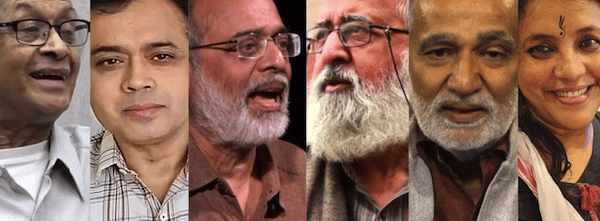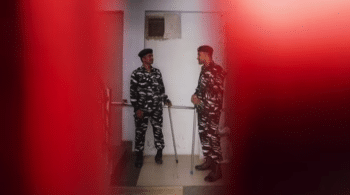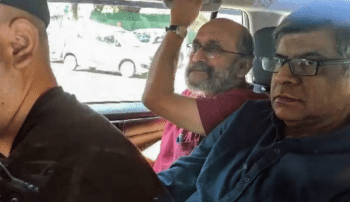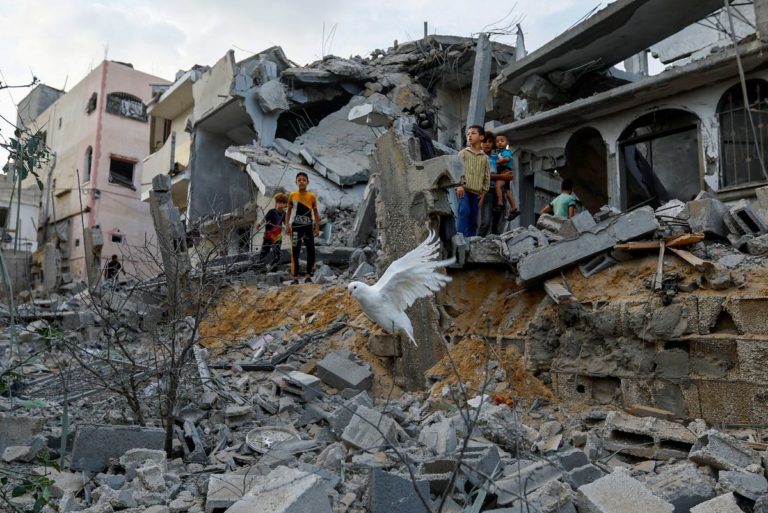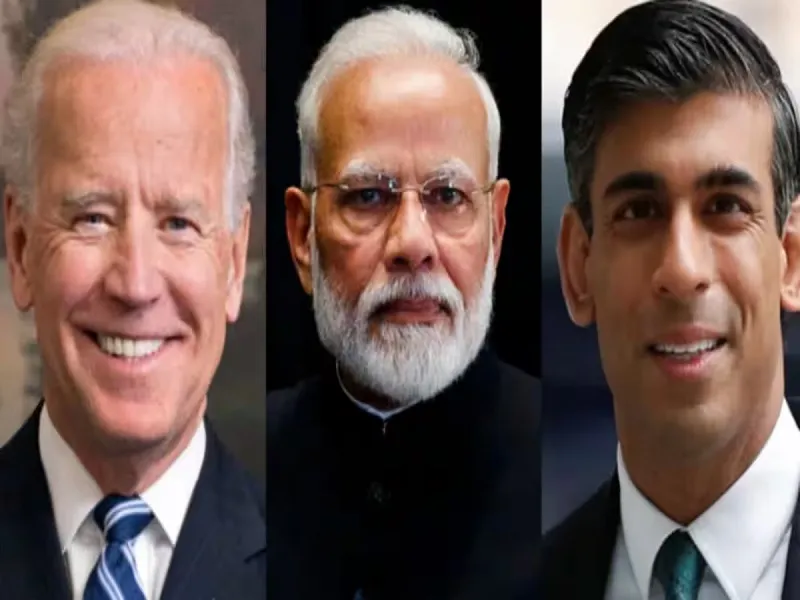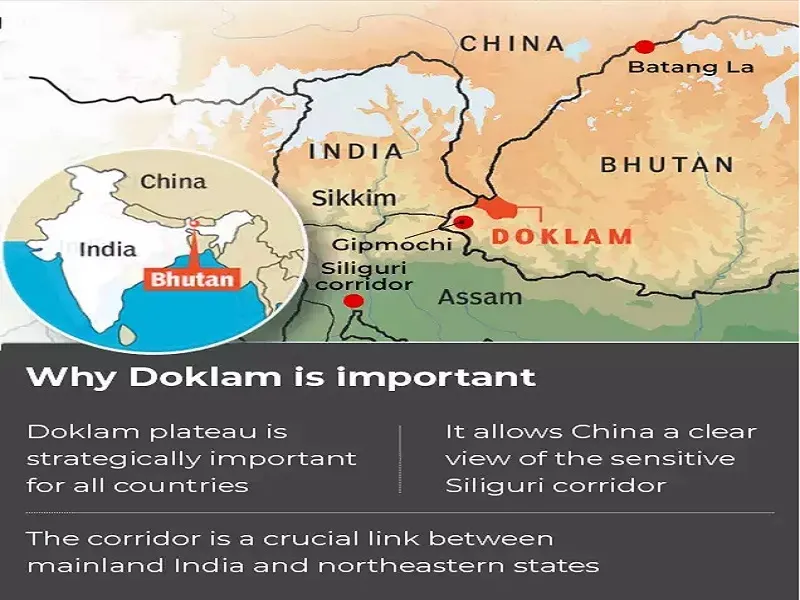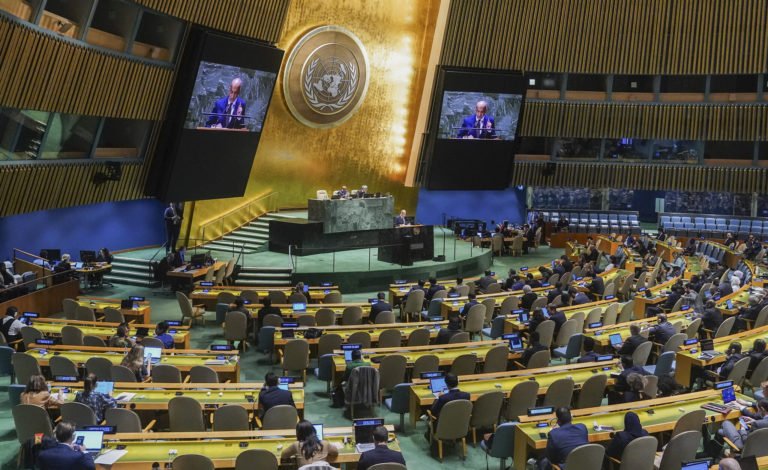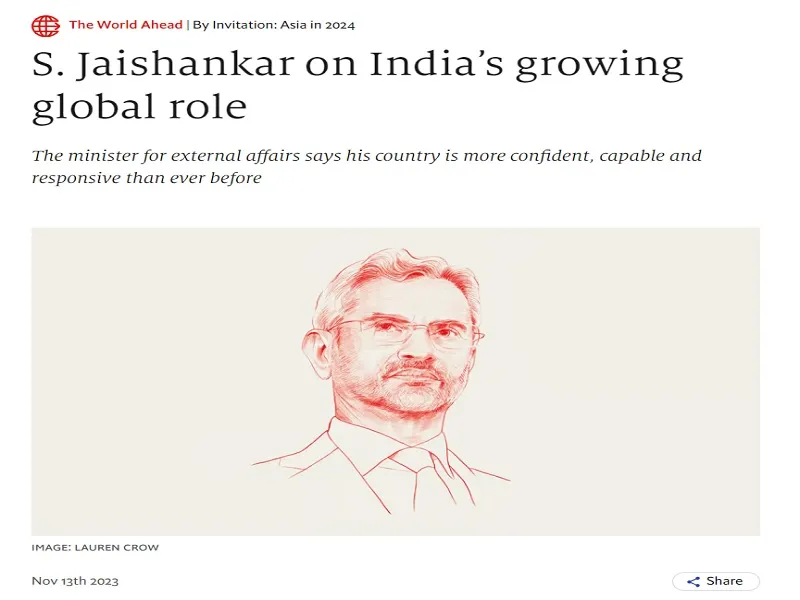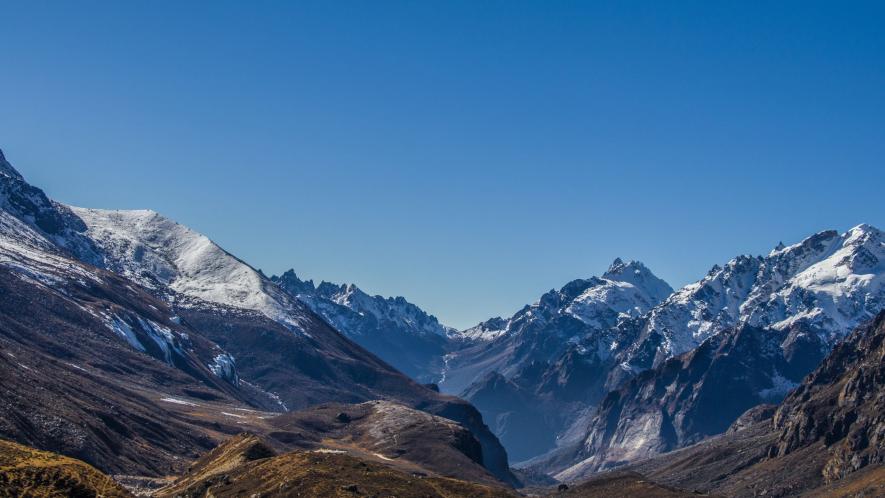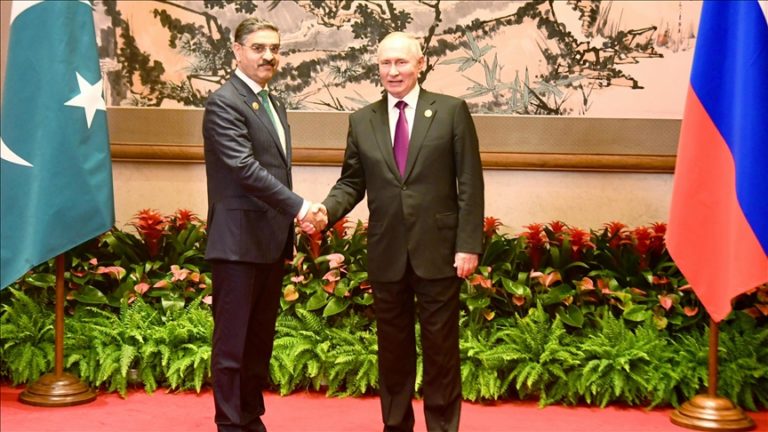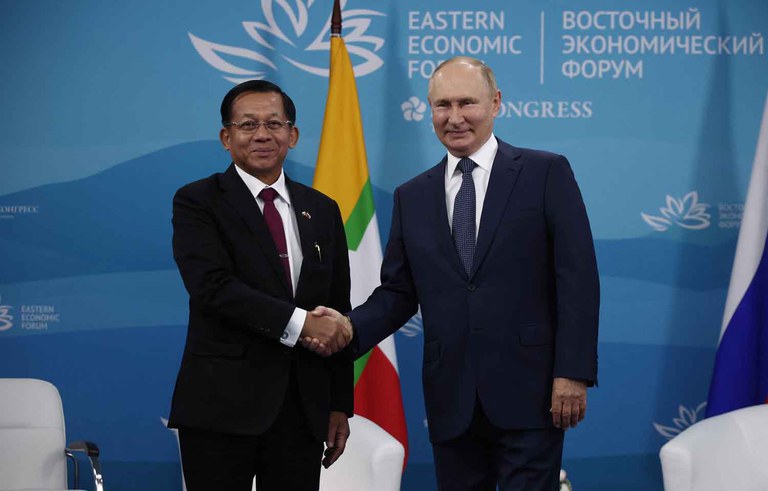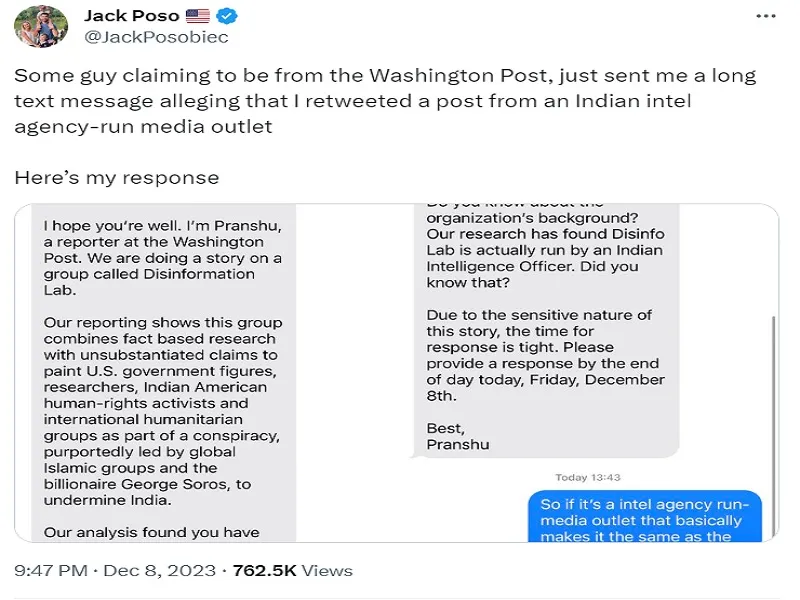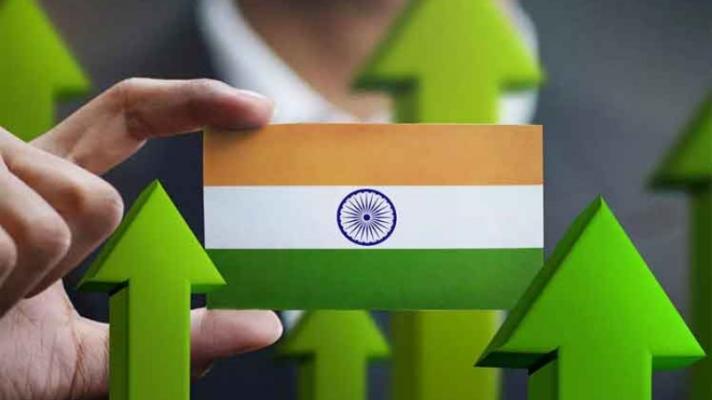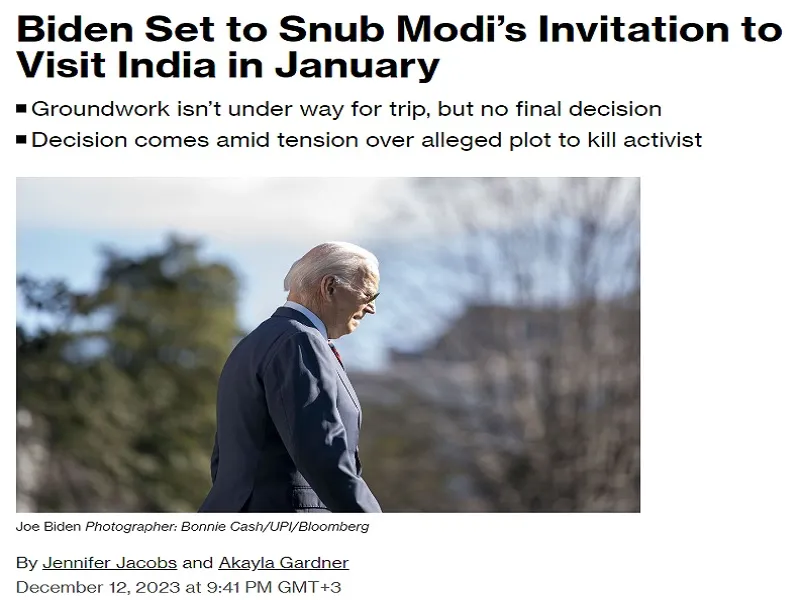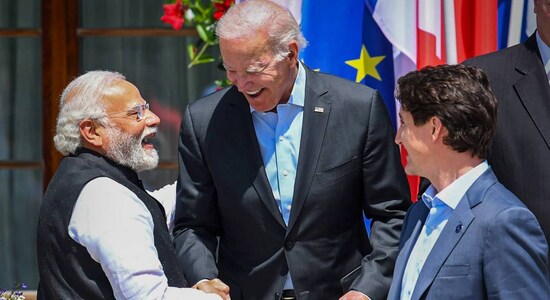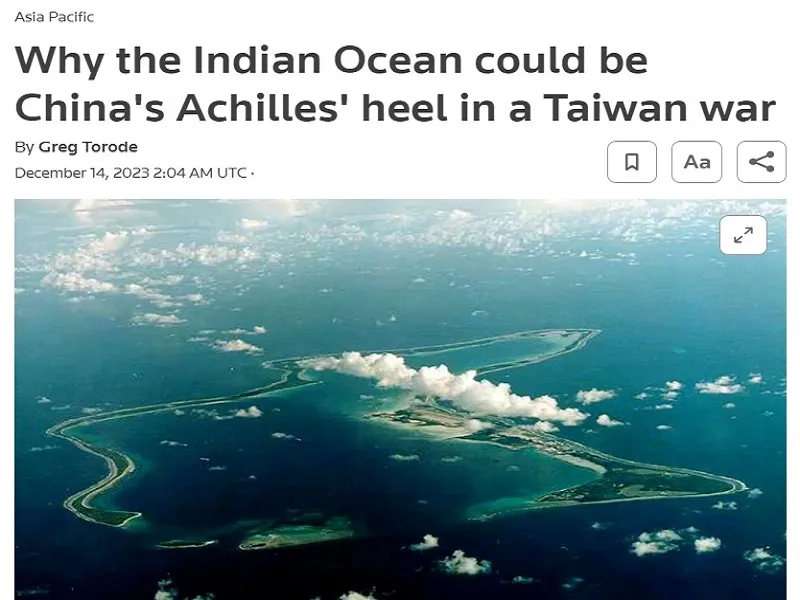India won’t be bullied in multipolar setting
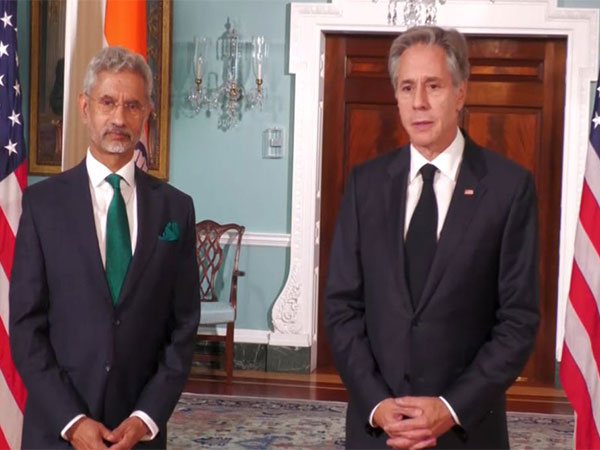
External Affairs Minister S. Jaishankar (L) met US Secretary of State Antony Blinken, Washington, DC, September 28, 2023
The sombre mood at the Council for Foreign Affairs in New York during External Affairs Minister S. Jaishankar’s talk on Tuesday was only to be expected against the backdrop of the India-Canada diplomatic spat over the killing of a Sikh secessionist in Vancouver in June, which, reportedly, was “coordinated” on the Canadian side with Washington based on intelligence inputs from the Five Eyes.
However, the event’s main thrust took an overtly geopolitical overtone with the CFR hosts calling out the Indian minister to weigh in on India’s growing assertiveness on the global stage and its perspectives on the international situation involving Russia and China, and the “limits” to the US-Indian relationship.
It is no secret that the Canadian-Indian spat into which Washington has inserted itself has a deeper geopolitical agenda. The Financial Times, the western daily perceived as closest to the Biden administration, in fact, carried a report last week entitled The west’s Modi problem with a blurb that neatly caught its main theme — “The US and its allies are cultivating India as an economic and diplomatic partner. But its prime minister’s authoritarian streak is becoming harder to ignore.”
The article held out a warning: “India is becoming one of America’s most important foreign partners as a bulwark against China. The US has invested heavily in bolstering relations with New Delhi as part of its broader strategy of enhancing relationships in the Indo-Pacific region. The push has accelerated this year… When and if evidence emerges that might support Canada’s claim, Washington will face a balancing act between its closest neighbour and a significant rising ally.”
Evidently, Jaishankar, whose experience and expertise in navigating the US-Indian relationship through choppy waters as well as balmy autumn alike is second to none in the Indian establishment, has been tasked by Modi to contain the fallout of the spat with Canada on India’s relations with the US. But the difference today is that his mission to Washington goes far beyond a diplomatic tango aimed at damage control or to swing something extra in the transactional relationship, since the West’s discontent about “Modi’s India” is at its core about the country’s independent foreign policies and resistance to becoming an ally in a traditional sense and accordingly tailor its performance on the global stage in accordance with the “rules based order” buttressing the US hegemony in world politics.
The US would have, in normal course, worked for a tradeoff with India but the times have changed and it is itself locked in an all-or-nothing contestation for global supremacy with China (and increasingly in the shadow of a Sino-Russian axis) which is of course a high stakes game where Washington would assign a role for India and have expectations out of Modi’s leadership.
On the whole, Jaishankar opted for a hybrid approach. On the one hand, he maintained that India will have an independent foreign policy attuned to a multipolar world order. But on the other hand, his main thesis was that Washington would be exceedingly foolish to risk the partnership with India.
Bloc mentality is obsolete
Conceivably, Jaishankar’s mission is like an iceberg with only a tip that is visible — at least, as of now. Nonetheless, his statements at the CFR in New York provides some reasonable clues. Basically, Jaishankar assembled his thoughts in three interlinked clusters — the emerging world order and US-Indian relations; Russia’s place in the scheme of things; and, the challenge of China’s rise. It presents a rare peep into the architecture of India’s current world view and can be summarised as follows:
1. The world order is changing and the US is also “fundamentally readjusting to the world.” This is partly to be seen as the “long-term consequences” of the defeat in Iraq and Afghanistan, but it principally stems out of the reality that the US’ dominance in the world and its relative power vis-s-vis other powers, has changed through the last decade.
Clearly, “the world has become in a way more democratic, and if opportunities are available more universally,” it is only natural that other centres of production and consumption would come about and there would be a re-distribution of power — “and that has happened.”
Realising this change, Washington has already begun “adjusting” to a multipolar world order without saying so, and is “actively seeking to shape what would be the poles and what would be the weight of the poles” in a manner that would benefit it.
Put differently, the US is looking at a world where it is no longer possible for it to work solely with its allies. The QUAD is a vivid demonstration of this new phenomenon and the US policymakers deserve to be complimented for their “imagination and forward-planning.”
Succinctly put, the US is already getting into a world order that has “much more fluid, much more dispersed centres of power” — very often much more regional, sometimes with different issues and different theatres producing their own combinations. That would mean that it is no longer realistic to seek clear-cut, black-and-white, solutions to problems.
2. The US shouldn’t lost sight of the “enormous possibility” to work with India to enhance each other’s interests where the focus should be on technology, as the balance of power in the world is always a balance of technology. The US needs partners who can secure its interests more effectively and there are only a finite number of partners out there. Therefore, for working together, the US has to reach some kind of understanding with its partners.
From the Indian perspective, there are even more finite countries who can be partners, and the US is indeed an optimal choice for India. Therefore, there is today a compelling need for India and the US to work together where the bulk of partnership relates to technology while “a bit part of it” could be a spillover into defence and security spheres, and a third part could be politics.
Fact is, today Global South is very distrustful of the Global North and it is useful for the US to have friends who think and speak well of America. And India is one of the few countries that have the ability to bridge the polarisation in world politics — East-West, North-South.
3. Jaishankar subtly fortified the above persuasive argument with an unspoken caveat that the Biden Administration should not make unrealistic demands on India’s independent policies or challenge its core interests lest it is counterproductive.
The point was driven home by calling attention to a stunning geopolitical reality that Russia is turning its back on its three-centuries old search of an European identity and is making strenuous efforts to build new relationships in the Asian continent. Russia is a part of Asia but its pivot is about carving out a strong role as an Asian power. Indeed, this is consequential.
As for India, its relations with Russia have remained “extremely steady since the 1950s.” Notwithstanding the vicissitudes in world politics or current history, both sides took care to keep the relationship “very very steady.” And that is because Delhi and Moscow share an understanding that there is a “structural basis” to the two countries working together, and, therefore, both take “great care to maintain the relationship and ensure that it is working.”
‘Woods are lovely, dark and deep…’
Implicit in the above thought is a strong message that given the centrality of the Russian-Indian strategic partnership, it is well nigh impossible to isolate India. Jaishankar may have buttressed his point further by giving a lengthy account of India’s standoff with China on the border (in factual terms from an Indian perspective) but, significantly enough, without attributing motives to the Chinese behaviour or even rushing into characterisations of it in picturesque terms of self-aggrandisement.
The intriguing part came when Jaishankar was open-minded enough to rationalise the Chinese Navy’s presence in the Indian Ocean and point-blank refused to mix up India’s QUAD membership with it.
Jaishankar rejected the hackneyed notions propagated by American analysts of a Chinese “string of pearls” around India and instead noted calmly that the steady increase in the Chinese naval presence in the past 20-25 yrs is a reflection of the sharp increase in the size of the Chinese Navy.
It is to be expected, after all, that when a country has a bigger Navy, that is going to be visible in its deployments. That said, it is only realistic for India to prepare for a far greater Chinese presence than before.
Importantly, maritime concerns are today not between any two countries. They are by their very nature concerns that are there for countries to deal with. In retrospect, the US presence in the Indian Ocean has diminished today and that left gaps at a time when threats actually increased.
But India does not see QUAD as necessarily geared for a role to counter China, as it will be “a bit old-fashioned to point towards another country.” To be sure, there are global commons to be safeguarded, and “there are concerns there that are better approached if countries worked together.”
Besides, India is no longer sure whether the US would respond to another tsunami in Asia with the same speed and scale as before during the Indian Ocean Tsunami in 2004. “Times have changed, force levels have changed and capabilities have changed. And China is one of those countries whose capabilities have gone up.” But India works with countries “that it can and not with those it cannot.”
Indeed, the shift in the tone of the Indian narrative following the brief exchanges between Prime Minister Narendra Modi and Chinese President Xi Jinping on the margins of the recent BRICS Summit has continued.
Jaishankar’s statements made it abundantly clear that India’s relationship with Russia is non-negotiable, whilst the surprising part is that Modi government is also sequestering the troubled relationship with China from external third-party interference, taking care, presumably, to leave avenues open for normalising the ties through bilateral channels in a foreseeable future.
The bottom line is, if the US-Canadian-Five Eyes agenda was to browbeat India’s strategic autonomy, Jaishankar rejected it. Curiously, at one point, he commented sarcastically that India is neither a member of the Five Eyes nor is answerable to the FBI.
In sum, Delhi prefers to deal with the spat with Canada as a bilateral issue of terrorism in all its manifestations, including secessionism, which also has a larger context of Canberra’s lackadaisical attitude politically toward India’s legitimate security concerns and its propensity to keep butting into India’s internal affairs as a gatekeeper of the “rules-based order.”
https://www.indianpunchline.com/india-w ... r-setting/
******
As India-Five Eyes Relations Sour, US Ratings Agency Moody’s Takes Aim at India’s Aadhaar Digital ID System
Posted on September 29, 2023 by Nick Corbishley
The report calls into question key aspects of India’s digital ID program, including its heavily centralised nature, the reliability of its biometric identification systems and its vulnerability to data breaches.
Relations between India and the so-called “Five Eye” nations (United States, United Kingdom, Australia, Canada and New Zealand) are in a bit of a rough patch. According to an article in The Hindu, India’s second most circulated English-language newspaper, India’s relations with Canada are now at their lowest point since the 1980s, after Justin Trudeau raised “credible” allegations last week that Indian agents were involved in the murder of Canadian citizen Hardeep Singh Nijjar — a Sikh plumber-cum-separatist leader shot dead by masked gunmen on the outskirts of Vancouver in June.
Delhi, of course, has denied any involvement. Nonetheless, the ensuing diplomatic crisis has already led to the freezing of a trade deal, visa suspensions and travel restrictions. And it is not just Canada that is casting aspersions on India’s possible role in the crime. According to the US envoy in Ottawa, David Cohen, Trudeau’s allegations, first aired in Canada’s parliament last week and then reiterated at the UN General Assembly last weekend, were based on “shared intelligence among Five Eyes partners”:
“There was a lot of communication between Canada and the United States about this… We have been consulting throughout very closely with our Canadian colleagues — and not just consulting, coordinating with them — on this issue. And from our perspective, it is critical that the Canadian investigation proceed, and it would be important that India work with the Canadians on this investigation. We want to see accountability, and it’s important that the investigation run its course and lead to that result.”
US Secretary of State Anthony Blinken has echoed these sentiments, confirming that the US is “coordinating” with Canada and is seeking “accountability,” while stressing that “it’s important that the investigation run its course.”
Aadhaar Under Attack
Now, a report by Moody’s Investor Services on some of the challenges facing digital identity programs around the world is raising hackles in the subcontinent. The main cause of the anger is a three-paragraph section that calls into question key aspects of India’s digital ID program, known as Aadhaar, including its heavily centralised nature, the reliability of the biometric identification systems it uses and its vulnerability to data breaches:
Aadhaar, the world’s largest digital ID program, assigns unique numbers to over 1.2 billion Indian residents using biometric and demographic data. This system enables access to public and private services, with verification via fingerprint or iris scans, and alternatives like One-Time Passcodes. The Unique Identification Authority of India (UIDAI) administers Aadhaar, aiming to integrate marginalized groups and expand welfare benefits access.
However, the system faces some hurdles, including the burden of establishing authorization and concerns about biometric reliability. There have been cases of service denials, and there are risks to reliability of biometric technologies, especially for manual laborers in hot, humid climates.
The real kicker comes in the third paragraph, which argues that decentralised identity [DID] programs such as the SSI [Self-Sovereign Identity] system rolled out by countries like Estonia — which is now working with the Zelensky government to pilot a national mobile application modeled on Ukraine’s Diia application — offer a far better approach to digital ID than India’s heavily centralised system:
In recent years, the spotlight has shifted toward DID [Decentralized Identity programs] as a strategic response to the security and privacy vulnerabilities posed by centralized ID systems like Aadhaar. While DID systems are currently in their formative stages, they harbor significant potential to introduce a more robust and private avenue for managing digital identities.
Perhaps most damning of all, the short section on Aadhaar is presented alongside an even shorter section on Worldcoin, the hugely controversial iris biometric cryptocurrency project developed by San Francisco and Berlin-based Tools for Humanity. Co-founded by OpenAI chief executive Sam Altman, the venture has “faced scrutiny over its data collection practices,” notes the report. “Critics have also voiced concerns about potential privacy violations, security breaches, and the potential misuse of Worldcoin’s data, which could lead to identity theft or surveillance.”
Moody’s Motives?
It is not clear whether Moody’s criticisms are merely poorly timed, given the geopolitical backdrop, or form part of a broader campaign in the Anglosphere against India’s economy — a campaign that some claim began at the beginning of this year when US hedge fund Hindenberg Research’s accused Adani Group of perpetrating “the biggest con in corporate history.” Accusations of “brazen stock manipulation and accounting fraud” triggered a whopping $50 billion plunge in the value of the shares of India’s then largest conglomerate.
“This is not merely an unwarranted attack on any specific company but a calculated attack on India, the independence, integrity and quality of Indian institutions, and the growth story and ambition of India,” Adani said in response. “The allegations and insinuations, which were presented as fact, spread like fire, wiping off a large amount of investor wealth and netting a profit for Hindenburg. The net result is that public investors lose and Hindenburg makes a windfall gain.”
As NC readers well know, India’s refusal to endorse their self-harming sanctions against Russia has angered the US and its NATO vassals partners no end. As readers may recall from the second instalment of Jerri Lynn’s fascinating two-part series on India, the war in Ukraine and the emerging multipolar world, U.S. deputy national security advisor Daleep Singh even warned the Modi government during a state visit to India in April 2022 that there would be “consequences” for countries, including India, “that actively attempt to circumvent or backfill the sanctions.”
Predictably, Singh’s threats have had the opposite of their desired effect. India has actually deepened its trade ties with fellow BRICS member Russia, becoming the largest buyer of seaborne Russian oil this year. It has also struck bilateral currency agreements with Russia as well as the UAE and Indonesia as part of the Modi government’s plans to internationalise the rupee. As Conor reported recently, it is also speeding up efforts to complete a new sanction-free transport corridor with Russia and Iran that would largely cut Europe out of the picture.
Sensitive Timing
The timing of Moody’s report is highly sensitive, and not just because of the fraught diplomatic backdrop. Its publication comes less than two weeks after India hosted the G20 annual meeting, which was widely hailed as a success despite the absence of both China and Russia.
One of the main points of discussion at the event was the design and implementation of “digital public infrastructure,” or DPI, on which India has both extensive experience and expertise. The G20 Leaders’ Declaration described DPI as “a set of shared digital systems, built and leveraged by both the public and private sectors, based on secure and resilient infrastructure.” Examples include digital vaccine passports, central bank digital currencies (CBDCs) and digital ID systems like India’s Aadhaar.
India is at the leading edge of this trend, thanks largely to the so-called “Indian Stack” — three programs launched by the Narenda Modi government over the past decade: the Jan Dhan Yojana, a financial inclusion program that has enabled hundreds of millions of Indians to access basic financial services; Aadhaar, the world’s largest biometric-enabled digital identity system with 1.3 billion users (of a population of 1.4 billion); and the UPI, an instant payments system launched in 2016, just six months before the government yanked 84% of India’s cash notes out of circulation in its infamous demonetisation campaign.
The World Bank, which, like the Gates Foundation, provided funding to the program, has described India’s digital transformation as “a potential game-changer for economic development.” Aadhaar has already transformed the lives of around 1.3 billion Indians beyond recognition, writes Pam Dixon of the World Privacy Forum in an exhaustive analysis of Aadhaar, some of it drawing from first-hand experience, as well as the potential risks, benefits and pitfalls of biometrics-empowered digital identity systems as a whole:
Men and women living in remote villages, some without plumbing in their homes and many living in extreme poverty without access to modern technology, in the space of a few years underwent sophisticated biometric enrollments and began using their biometric identity for access to government subsidies such as rations. Women, who used to take inches-thick paper booklets holding generations of their families’ health care history written carefully in script, now access health care through their Aadhaar identity with a digital authentication, for example, through a fingerprint scanner or a mobile phone.
The results, as I’ve previously noted, have been mixed. The three programs have massively accelerated India’s digital transformation while also excluding millions of people from government programs and services. As the FT noted a couple of years ago in an article titled “India’s All-Encompassing Identity System Holds Warnings for the Rest of the World,” Aadhaar has helped to speed and clean up India’s bureaucracy while also massively increasing the Indian government’s surveillance powers. For many Indians, the transformation appears to have paid off, with Modi consistently ranking as one of the world’s most popular leaders.
The heading of the FT’s latest article on Aadhaar, just two weeks ago, reads: “India Points the Way to Digital Access Across Africa.” The sub-heading reads: “Bill Gates is among the supporters who say DPI is key to reducing poverty but critics warn civil liberties could be at risk.”
Both the Modi government and Indian companies are now looking to export the DPI platforms and applications they have jointly developed, including Aadhaar and the Unified Payments Interface (UPI), to other countries around the world, particularly Africa. From Livemint:
In June, India signed a Memorandum of Understanding (MoU) with Antigua and Barbuda, Armenia, Sierra Leone and Suriname on sharing its DPI solutions. Mint reported earlier that India is also in talks with a number of other developing countries in Latin America, Africa and Southeast Asia, to extend these DPI partnerships.
India’s neighbours have also adopted UPI in recent years. Nepal and Bhutan use the platform while Sri Lanka is expected to operationalise UPI in the coming months. This year, India and Singapore linked their payments systems to allow for an easier flow of remittances.
A Fast, Furious Response
Given the harm the Moody’s report could inflict on global perceptions of Aadhaar, the Modi government was quick to respond to Moody’s claims. And it didn’t hold any punches. The public body in charge of Aadhaar, the Unique Identification Authority of India (UIDAI), said the US credit ratings agency had made sweeping assertions about the digital identity program without providing any evidence to back them up, which, to be fair, seems to be true: Moody’s does not offer any concrete, detailed information to back up its assertions.
In a note titled “Aadhaar, the Most Trusted Digital ID in the World — Moody’s Investors Service Opinions Baseless”, the Ministry of Electronics & IT said that both the IMF and the World Bank had lauded Aadhaar and India’s other DPIs. It also argued that over a billion Indians had placed their trust and faith in Aadhaar by using it to authenticate themselves “over 100 billion times”.
What it didn’t mention is that they had little choice in the matter: Aadhaar was first introduced as a voluntary way of improving welfare service delivery and giving people without identification an ID they could use, but the government rapidly expanded its scope by making it mandatory for welfare programs and state benefits as well as a seemingly ever-growing list of services and activities, including medical records, bank accounts and pension payments.
In response to Moodys’ claim that Aadhaar has serious security issues, both the Ministry and UIDAI categorically state that there have been no reported breaches of the Aadhaar database to date, which is flagrantly untrue. Since 2017 security experts and journalists have reported multiple vulnerabilities and data leaks tied to Aadhaar. In its Global Risks Report 2019, the World Economic Forum, one of the world’s biggest proponents of digital ID programs, noted:
“The largest (data breach in 2018) was in India, where the government ID database, Aadhaar, reportedly suffered multiple breaches that potentially compromised the records of all 1.1 billion registered citizens. It was reported in January 2018 that criminals were selling access to the database at a rate of Rs 500 for 10 minutes, while in March a leak at a state-owned utility company allowed anyone to download names and ID numbers.”
A 2018 First Post article lists a litany of other data leaks, hacks and breaches. Three examples:
“According to a report last year, a gang in Kanpur was running a racket in order to generate fake Aadhaar cards. UIDAI stated that its systems detected abnormal activities and filed a complaint accordingly. It clarified that the big scam to generate the fake cards was foiled by the system and it did not affect the database of the processing system. What is interesting is that UIDAI refused to disclose the number of fake or duplicate Aadhaar cards in circulation citing the threat to national security. So much for transparency and accountability on the part of UIDAI and the government.”
“[An] investigation by The Tribune uncovered that anonymous individuals were ready to sell the Aadhaar card details of any individual with an Aadhaar number against the payment of a sum of Rs 500. An additional Rs 300 would also let you print out these Aadhaar cards… What was surprising to note is that the ‘agents’ were running a racket using messaging platforms as WhatsApp to reach out to potential buyers.”
“According to a previous report last year, WikiLeaks tweeted claiming that CIA might have access to the database as well. The series of tweets claimed that CIA was using Cross Match Technologies to access Aadhaar database as this company was one of the first suppliers of biometric devices certified by the UIDAI. The report claimed that CIA was using Express Lane, a covert information collection tool to ex-filtrate the data collection.”
To date, UIDAI has categorically denied any data breach in the Aadhar database even though, as even Wikipedia notes, many of the unsecure endpoints and government websites with unauthorized data access were taken offline after the reports. UIDAI also filed a case against The Tribune alleging false reporting.
Aadhaar also has serious privacy issues.
https://www.nakedcapitalism.com/2023/09 ... ystem.html
